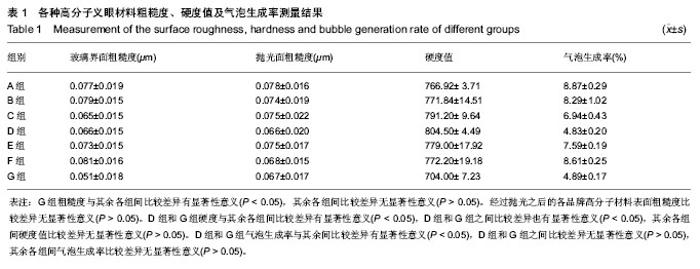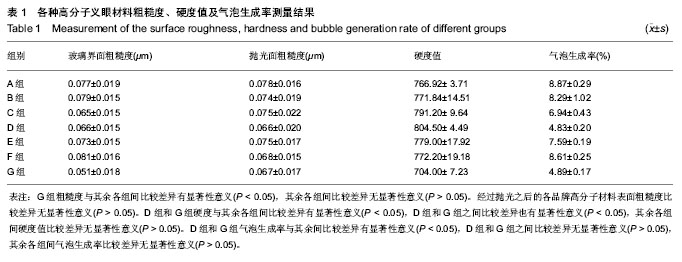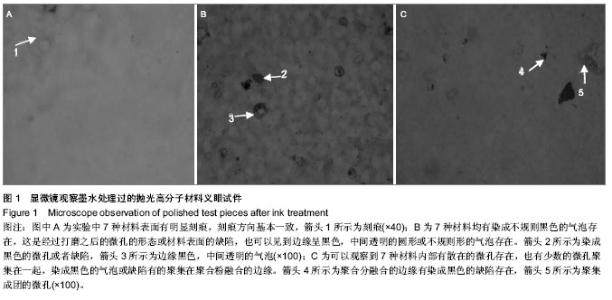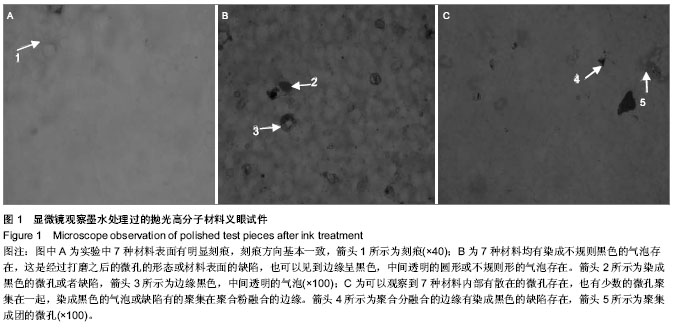| [1] 赵铱民.口腔修复学[M].6版.北京:人民卫生出版社,2008: 459-461.[2] 陈怡清.口腔材料学[M].4版.北京:人民卫生出版社,2008:55- 56.[3] 金晖博,张莹.眼外伤等眼外形破坏时PMMA义眼的整容效果[J].眼外伤职业眼病杂志, 2004,26(6):401-403.[4] 高方,高利雅,宋斗,等.聚甲基丙烯酸甲酯义眼片在眼球缺失美容中的应用[J].中华医学美学美容杂志,2006,12(2):68-70.[5] 王颖.纳米基托复合树脂的气孔率及力学性能的研究[D].佳木斯大学硕士毕业论文,2008.[6] 王彦红,杨晓东,蒋聪敏,等.不同加热处理的义齿基托树脂的表面粗糙度研究[J].中国医科大学学报,2007,36(6):683-684.[7] Bollen CM, Lambrechts P,Qurynen M.Comparison of surface roughness of oral hard materials to the threshold of surface roughness for bacterial plaque retention:a review of the literature.Dent Mater.1997;13(4):253-269. [8] Borchers L,Tavassol F,Tschernitschek H.Surface quality achieved by polishing and by varnishing of temporary crown and fixed partial denture resins. J Prosthet Dent.1999;82: 550-556. [9] 王雪,陈春霞,翟小棠,等.不同包埋方法对义齿表面粗糙度的影响[J].实用口腔医学杂志,2005,21(2):255-256.[10] 王雪,陈宜辉.不同膨胀系数石膏模型材料对树脂义齿表面粗糙度的影响研究[J].口腔医学,2008,28(8):424-426.[11] 李笑梅.口腔修复材料的表面粗糙度及表面自由能对微生物粘附的影响[J].第二军医大学学 报,2001,20(5):487-489.[12] 刘广顺,孟令强,王瑶,等.义齿基托材料与表面粗糙度对白色念珠菌黏附的影响[J].实用口腔医学杂志,2007,23(6):886-888.[13] Pine KR,Sloan B,Han KI,et al.Deposit build up on prosthetic eye material (in vitro) and its effect on surface wettability.Clin Ophthalmol.2013;7:313-319. [14] 夏熹.牙科常用冠修复材料磨耗性能的研究[D].重庆医科大学, 2007.[15] Wolfaardt IF,Cleaton-Jones P,Fatti P.The occurrence of porosity in a heat—cured poly(methyl methacrylate)denture base resin.Prosthet Dent.1986;55(3):393-400.[16] 付兆江,王雪,王鹏远.微波和水浴聚合法对树脂基托义齿精度影响的研究[J].口腔医学研究,2009,25(2):193. [17] 王炯明,朱永和,叶文鞅,等.控温电磁炉热处理后义齿基托气泡的临床观察[J].口腔材料器械杂志,2002,11(4):221.[18] 夏春明,向潍州,张素芳,等.快速高压热聚合基托树脂的气泡和表面硬度的观察[J].口腔材料器械杂志,1997,6(1):30. [19] Firtell DN,Harrnan LL.Porosity in boilable acrylic resin.J Prosthet Dent.1983;49(1):133-134.[20] Lai CP,Tsai MH,Chen M,et al.Morphology and properties of denture acrylic resins cured by microwave energy and conventional water bath.Dem Mater. 2004;20(2):133-141.[21] Marco AC,Debora BB,Raphael FS,et al.The effect of polymerization cycles on porosity of microwave-processed denture base resin.J Prosthet Dent.2004;91:281-285.[22] Baffle M,Graser GN,Myers ML,et al.Porosity of denture resin cured by microwave energy.J Prosthet Dent.1991;66(2): 269-274.[23] 郑军,韩华利,程超,等.液压式热处理义齿基托的物理性能[J].解放军医学杂志, 2000,25(5):389.[24] 朱丹鹏.纳米基托复合树脂与传统基托树脂冲击强度及洛氏硬度的对比研究[D].河北医科大学硕士研究生毕业论文,2005.[25] 陈春霞.聚合方式对树脂义齿精度和物理性能的影响研究[D].青岛大学硕士学位论文,2003.[26] Consani RL,Domitti SS,Rizzatti Barbosa CM,et al.Effect of commercial acrylic resins on dimensional accuracy of the maxillary denture base.Braz Dent J.2002;13(1):57-60. |



